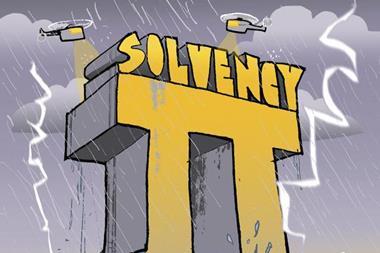Solvency II is now a step closer, but the hardest work is still to come for those wishing to remain market leaders, suggests Sanjiva Perera
The road ahead is becoming clearer – the agreement of the Solvency II Framework Directive by the European Parliament and the Economic and Financial Affairs (ECOFIN) Council marks a watershed in the long life of the proposed regulation. For the first time we have an agreed Level 1 text and an understood timeline.
To arrive here required the use of much political capital, and in doing so governments, regulators and the industry have delivered a united and clear message: harmonising the approach to the supervision of insurance companies and improving the industry’s ability to manage capital and risk is a top priority.
Legislative progress will continue – with the next steps including the translation of the agreed text into the different national languages and the ongoing drafting of the implementing measures. Committee of European Insurance and Occupational Pensions (CEIOPS) published a first set of draft recommendations in March, with further releases expected both in July and the autumn. These papers provide an opportunity for industry participants to provide feedback and shape future regulation, as well as take this detail to perform gap analysis and shape their Solvency II implementation programmes.
The level of detail and volume of papers cannot be underestimated and significant resource with the right expertise needs to be dedicated to interpret, perform gap analysis, and engage with and provide feedback to the regulator. The availability of internal resources will prove especially challenging during the summer months when holidays across Europe cause significant disruption.
It is a good job so far but it still falls short – while the UK market has made significant investment in internal models to comply with the individual capital adequacy standard and corporate governance requirements, more work is needed. The experience of banks to implement Basel II shows how rigorous the regulatory approval process will be and insurers should not make the mistake of underestimating this step. Some insurers may try to reduce their effort by using a standard formula, however, this will be to the detriment of yielding business benefit and result in less confidence of investors and rating agencies.
Embedding internal models represents a significant opportunity to transform core insurance processes – including underwriting, pricing, reinsurance, and claims, as well as enterprise processes such as strategy, planning, asset liability management including asset allocation, incentivisation and risk management. To effectively embed requires not only knowledge of operating models but also detailed knowledge of business processes and re-engineering expertise. For example, a reinsurance purchasing manager must perform timely “what if” analysis on different structures including retentions, limits and number of reinstatements, as well as make placement decisions based on the impact on capital requirements and return on equity. Any internal model must reflect this and needs to be integrated into a re-engineered reinsurance placement process.
Change will be felt across all levels from the board through to front-line employees, with the recognition of change management as an essential part of any Solvency II programme. Every board member needs to be educated on their internal model and be able to articulate and show how it is used as part of the strategic decision-making process. Banking executives were often left embarrassed when asked by supervisors to articulate how their internal model worked. Equally, front-line employees could not be shielded from inquisitive supervisors who bypassed middle management and sought to test the pervasiveness of models within banks. To achieve the required degree of education and adoption of internal models requires a significant shift in the culture of most insurance organisations, remembering that the way insurance business has been conducted has not changed significantly over the years.
A failure to meet Solvency II requirements may have disastrous consequences – with implication for both an insurer’s business model and share price. An insurer that chooses to use a standard formula or fails the internal model approval process could find that its capital requirements for a particular product or market segment increase significantly making it unviable. This is shown by the results of the quantitative impact studies where specific product lines showed a significant increase in capital requirements when compared to the Solvency I regime.
Basel II provides further learning where some banks failed to obtain approval for their internal model for a specific business segment resulting in increased capital, reduced competitiveness and an exit from that specific market. Further, where a supervisor makes a capital add-on to address perceived weaknesses, Solvency II Pillar 3 requires external disclosure with ramification for the insurer’s share price.
Firms need to get to work now – to deliver the breadth and depth of co-ordinated change and meet the implementation deadline of 31 October 2012. This means having a clear vision for the end state that is comprehensive and covers: the full lifecycle of capital and risk management; the majority of functional areas and all aspects of the operating model. Firms must mobilise their implementation teams and this includes transitioning from a narrow policy-interpretation mindset to a broader programme one that embraces a skills set including finance, risk, actuarial, business, IT, and change and project management.
Finally, demonstrable flexibility in programme rollout will be essential to meet emerging requirements from both Level 2 and 3 activities, as well as integrate with in-flight internal projects and external initiatives such as IFRS Phase 2 and broader accounting and regulatory reform. Although 2012 may seem a long way off and much of the detail is still outstanding, the option to “wait and see” has now vanished, insurers must start now or be prepared for the consequences.
Hosted by comedian and actor Tom Allen, 34 Gold, 23 Silver and 22 Bronze awards were handed out across an amazing 34 categories recognising brilliance and innovation right across the breadth of UK general insurance.













































No comments yet